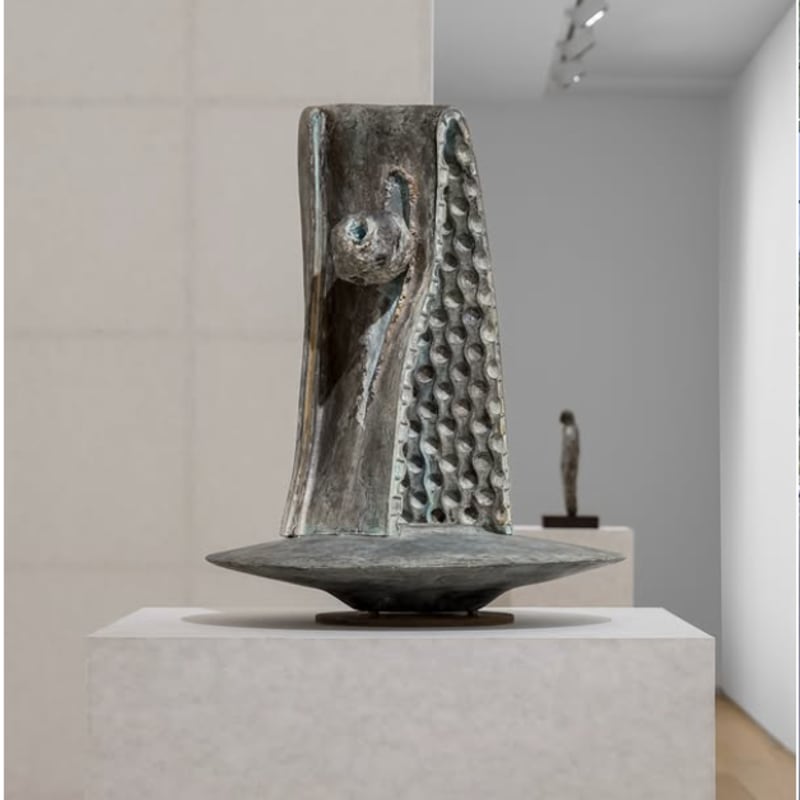Hans Josephsohn Review At Museum MMK für Moderne Kunst
By John-Paul Stonnard
Hans Josephsohn’s life began, as the sculptor describes in a recent documentary film by Matthias Kälin and Laurin Merz, on the day he left Germany in 1937, at the age of seventeen. As a Jew, he was compelled to emigrate, leaving his parents behind—he never saw them again—and he traveled to study art in Florence. He moved to Switzerland the next year, where he has lived and worked as a sculptor ever since. Fortitude and patience have marked his long and, until recently, underrecognized career as an artist. Following Rudi Fuchs’s 2002 exhibition of his work at the Stedelijk Museum, Amsterdam, there have been several shows internationally, most recently this excellent survey, organized by Udo Kittelmann. Most of the sculptures and reliefs in the show came from the Kesselhaus in St. Gallen, an informal exhibition space next to Josephsohn’s foundry, where he has shown his sculpture since 2004. All the works exhibited at MMK were untitled and cast in brass, with the exception of three works in plaster. Figurative works from the 1950s—crude, caricatural standing figures and busts depicting anonymous subjects—were shown alongside more recent monumental figures and reliefs in a monumental abstract style. Josephsohn models in plaster, accumulating and accreting matter in a technique he has described as antithetical to Giacometti’s method of subtraction, aiming at a voluptuousness more reminiscent of Maillol. Kälin and Merz’s 2007 film, which was also on view, shows the artist at work, molding chunks of plaster, often debris from the floor. The haphazard crumbling surface of the plaster models is preserved in the brass casts, whose surfaces often look like dried earth, or, in the case of works such as Untitled (Verena), 1986, cooled lava.
Of the works seen in Frankfurt, the most striking were his single standing figures, which appear as humanoid rocky outcrops, devoid of features or narrative gestures, doll-like personifications of dumb humanity, comically vulnerable. Another type to which he consistently returns is a recumbent figure, a heavy female nude crumbling to pieces like an ancient corpse. This image derives, the artist explains, from an early memory of seeing a naked woman recline on a bed, but the details of the experience are now lost to him. The generic recumbent figure appears as a symbol of the layering of memories by which the crucial and formative events of life become blurred myths.


















































































































































































